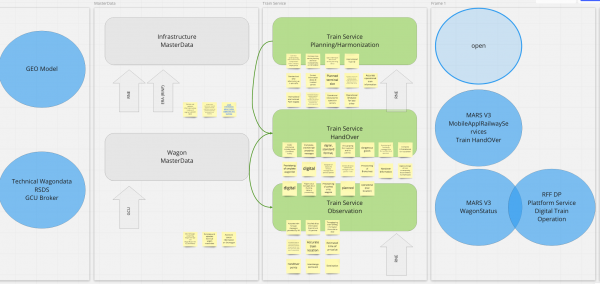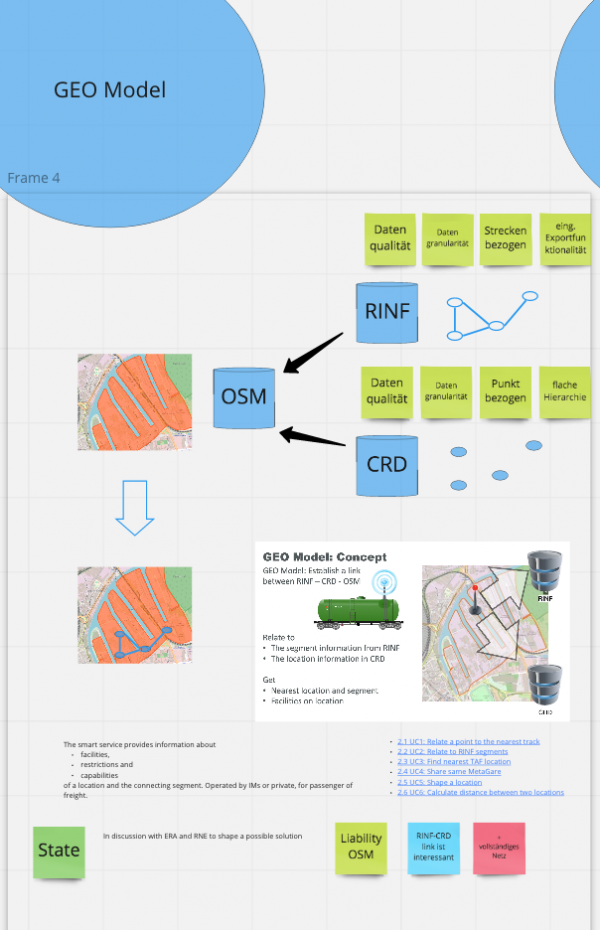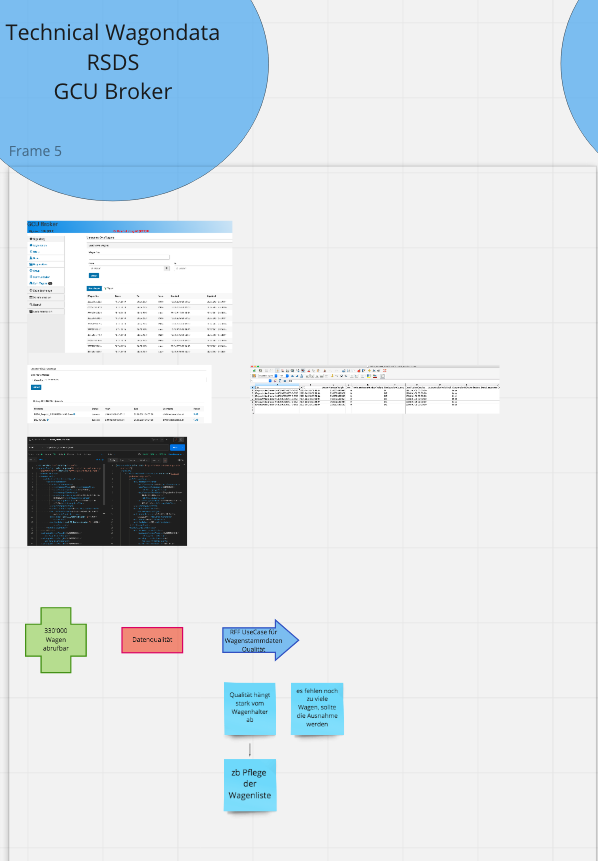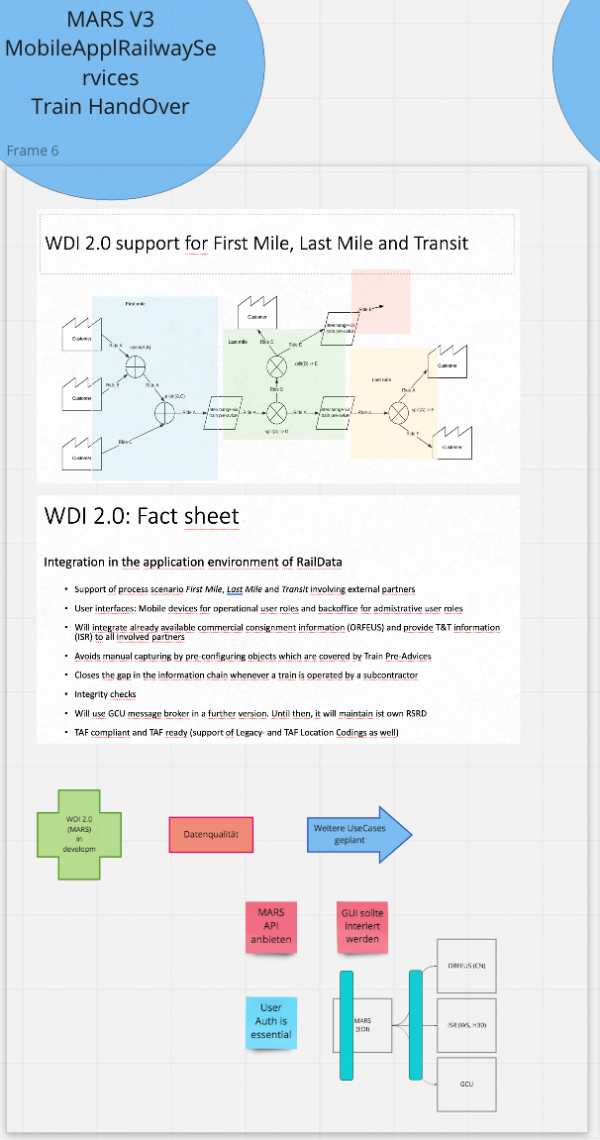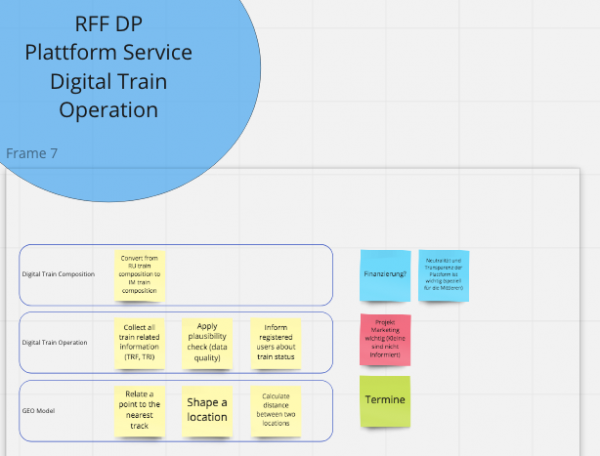DS DE1 SOL
Contents
Organisation
The GAP Session was held on 2.September 15:00 to 17:00 with two participants
- Martin Schmidt SBB Cargo International AG
- Wolfgang Schüttler CN Consult
The other two participants were excused because of operational issues
- Markus Bürkl WHE
- Pascal Truniger BLS Cargo AG
The next alignment session is planned for end of November.
SOL
Mapping GAPs to SOLutions
Between the two workshops the RFF team
- grouped the raised issues from the GAP session and
- attributes proposed solutions to those groups
There were 5 potential solution areas identified:
- POC GEO model for the group infrastructure master data
- Technical wagon data for the group wagon master data
- Train Service Harmonization for the group train service planning
- MARS for the group train service handover and the group train service observation
- POC digital train operation for the group train service observation
POC GEO Model
The GEO Model concept foresees to
- link the existing infrastructure databases (CRD, RINF, ...)
- benefit from the open source community driven OpenStreetmap database [[1]] for railway related information
- aggregate this information and
- offer service
- for translation
- for catching network points & segments
- for calculation of distances
- for facility information
The use cases of the GEO model can be found here.
At the moment three of the six defined services are planned to be realized in early 2022.
The participants
- showed interest in obtaining a link between TAF CRD and RINF information
- marked that it is crucial to have access to the complete network information (IM coverage, ports and terminals)
- raised concerns about the liability of the OSM service. In the discussion we concluded that we reduce this risk by not adding additional information to the OSM dataset beside the linking IDs. In case of a migration from OSM to another GEO database these links can be exported and transferred to the new service.
Technical wagon data
As solution for retrieving technical wagon data RFF proposes to use the GCU Message Broker functionality. The Broker
- accepts wagon lists as input
- distributes the requests to the corresponding keepers
- ask the specific keeper systems for the technical data
- aggregates the answers and
- replies synchronously to the requesting RU.
Status
At the moment the technical data for 330'000 wagons are available. With the ongoing integration of further keeper systems this number will increase.
The participants pointed out, that despite the majority of wagons already accessible the situation
- when requesting the wagons for one train
- the response will contain at least on missing wagon
must become the exception and not the normal state for the service to become generally accepted and used widely.
The data quality of the technical data is heterogeneous across the wagon keeper. The maintenance of
- teh wagon list and
- the technical attributes of the wagons
differs widely among the keepers. There the proposed measure is to set up a quality reporting process as foreseen in the RFF Capabilities. With such a quality feedback loop installed
- the quality rate can be measured and
- over time step by step increased.
Train service harmonization
The solution is identified in
- the smart service SM 04 Train Service Harmonization and
- the ambition 2024 topic Train Service Harmonization.
